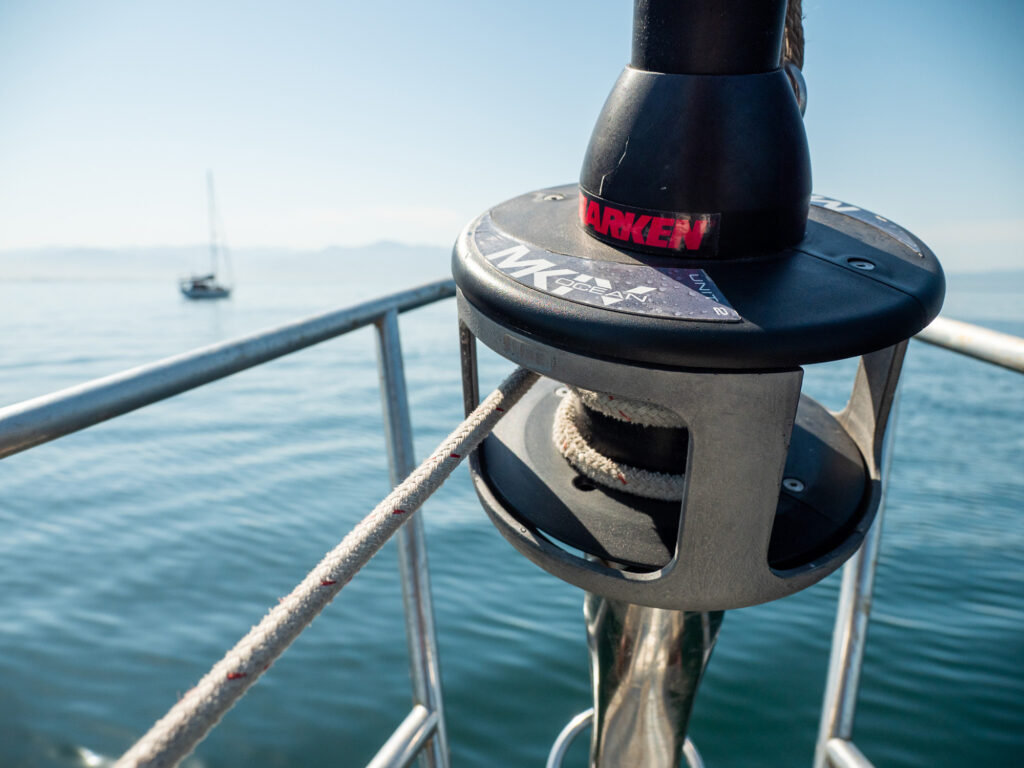
My jaw ached from hours of clenching. My fingers grew numb from white-knuckling the companionway as a brace. We were crossing the Sea of Cortez from Cabo San Lucas, Mexico, with our course set for Chacala on the mainland. There, we planned to rendezvous with my partner’s family.
We had disobeyed the cardinal rule of cruising: You can choose a time or a place, but you can’t choose both.
Despite the weather reports predicting sporty winds blowing into the 20s with moderate northwest swells, we were 40 miles southeast of Cabo when the northwest swell grew to 10 to 12 feet, every six to eight seconds, breaking frequently over the beam of our 41-foot Cheoy Lee sailboat, Avocet. The wind was sporty, as predicted, but at a much higher speed of 25 knots sustained with chronic gusts into the mid-30s from behind us.
I was on the first watch of the night, my harness clipped into our dodger, my eyes on the horizon. The only light to fill the ink-black space ahead of us came from the breaking waves that painted the sea with moments of phosphorescence.
Then, the faint glow of the moon began to rise. It was around that time that things took a turn for the worse.
Bang is a sound you never want to hear at sea, let alone at night. Chris sprung from below as I tried to free myself from the dodger. “What was that?” he asked, thinking we had hit something.
“It came from the rig!” I yelled over the deafening wind and sea. “I can’t see anything!”
It took a few moments to realize that our 130 percent genoa that was heavily reefed had completely unfurled, leading us to become overpowered very quickly.
We disengaged our autopilot and immediately broke off, putting the swell more on our aft quarter to prevent further rounding up. Avocet became a sled with hull speeds into the double digits as we tried to figure out a plan.
I clipped into the helm. Chris secured himself to the jack lines and walked to the bow with a new furling line in hand.
In horror, I watched waves break over the bow and snuff out his headlamp. He would soon realize that our furling line had chafed through at the drum.
At first, he tried to install the new furling line within the drum, but there was no way he could get enough wraps. Chris returned to the cockpit to grab another line, kissed me on the forehead, gave me a reassuring smile, and scrambled back to the bow. He attached the bitter end of the line to the sail’s tack and wrapped as many loops around the top of the drum as he could, essentially creating an external furling unit.
Then, Chris sat, feet braced against our bulwark, and pulled in the furling line. The wind was howling, but it couldn’t muffle his cheers as the sail began to furl in.
We then used the same technique as dousing our spinnaker to have our main sail shade the genoa, removing as much power as we could from the sail before blowing the sheet to make it easier to pull it in. Once the secondary furling line was secured to a cleat, Chris could remove the defunct line within the drum, install the new one, and reef the sail again to get us back on course.
This was a worst-case scenario for a furler failure, but the method worked in a pinch. It prevented us from having to pull down the sail, which would have increased risk for us and for Avocet. In high winds, you should actively avoid coming into irons because there is a high probability that it will shred your sails to oblivion or tangle your lines. Or both.
In calmer seas later, after further investigation, we concluded that the furler drum had been set incorrectly and went undetected until the furler line was tested under tension, causing the abrupt chafe and snap. Ever since then, we have reset the furler drum and replaced the line, and have not had a single issue in the additional 2,000 nautical miles under our keel.
We hope you never have to try this yourself, but we urge you to run through a Plan B, C and D if you should ever experience a failure like this.








